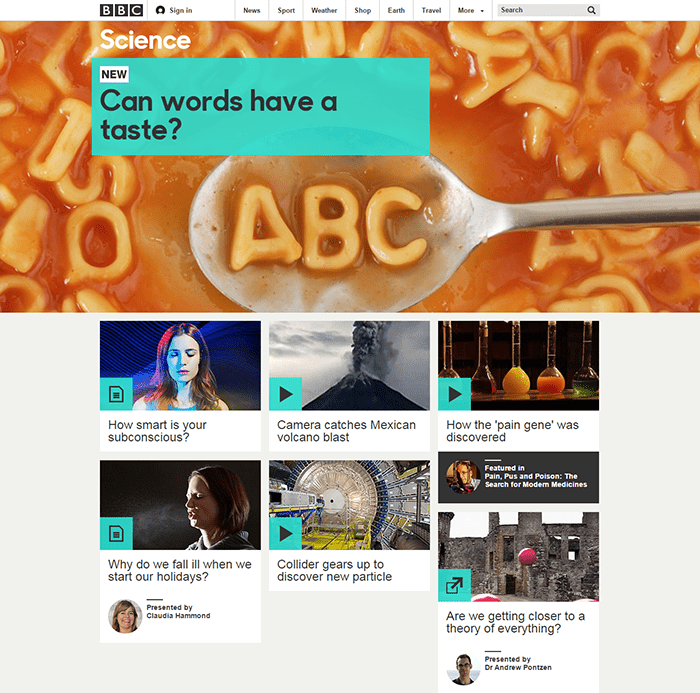An ever increasing number of websites are using their home pages as landing pages. Many SaaS websites are using this approach to directly attract users and getting the users to sign-up for a free trial. If all websites were to follow this and get a desired outcome, web developers and designers would be happy souls! Ultimately, the purpose of every website is to see heavy conversion without wasting much time. Alas, everything isn’t this simple.
One of the major challenges of using home pages as landing pages is getting the copy right. Excessive copy can turn the users away while too little can make them skeptical. When writing copy for such pages, you have to remember not to make a long sales pitch (something that is more commonly found in traditional home pages). You shouldn’t also be ending with a tag line.
How To Know When You Have Enough Copy?
One of the questions that would keep bothering you is – how much is enough copy? Most often the copy will depend on several factors, such as what you want from your visitors, how much information you think will help them take an action etc. That’s why you cannot simply decide on having ‘long’ copy or ‘short’ copy. You should decide after considering several things.
Reading Content on Home Page
When it comes to reading content on websites, users tend to scan and not read. Research has shown time and again that users read only when they want to, otherwise they simply scan the page. Writing a full-page promotional content on a home page (that is also your landing page) might not fetch you dividends. But copy that has been objectively written with the concise use of language works. Users prefer content that can be easily scanned through. It has also been concluded that users read copies which have a combination of good information architecture, good page layout and good writing.
BBC Science Website makes it easy for people to go through the headlines easily.
It seems that keeping the web content brief and to-the-point should do the trick for you. Unfortunately writing content is much more complicated than this. It is important you understand how much copy is enough to make the users sign-up. Keeping in mind the following four points will help.
#1. Goal of The Page
Why have you created the page? What is the purpose of making the home page your landing page? Or do you want an independent landing page meant to generate sale? Is it a cart page on an e-commerce site? You can only write proper content when you have determined the goal or purpose of the page.

The copy of this unusual business service provider i.e – Funeral Plans website is in fact conversion oriented. Use of pithy words, proper headlines and short sentences have done the trick.
#2. Customer Motivation
Customer motivation is directly linked to conversion rate optimization. That is why you have to know what customers want. This will help you determine how much copy will persuade the visitors.

The home page of SiaPremiumEconomy delivers the information that its targeted audience need. No meaningless words. The content is focus on what the customer is actually looking for.
#3. Addressing Customer Apprehensions
Not every visitor will be sure of the action he wants to take. He will have uncertainties, fears, hesitations and concerns. You will have to alleviate them. Writing a copy that addresses these apprehensions, even if they are in the form of bullets, will help you in the long run.

The Home page content of Paypal US tries to alleviate the fear of people so that people opt for its service. Use of compelling text and evocative images helps the website win the trust of the audience.
#4. Understanding Customer’s State of Awareness
You have to realize that every customer is different and his level of awareness will also be different. The amount of persuasion your customers need will depend on their level of awareness. According to famous direct response copywriter, Gene Schwartz, there are five levels of awareness (as described in his book Breakthrough Advertising) –
- The Most Aware: Customer is fully aware on the product, only wants to know the ‘deal’.
- Product-Aware: Customer knows what you sell but unsure if it’s right for him.
- Solution-Aware: Customer knows what results he wants, not sure if your product can provide him that.
- Problem-Aware: Customer realizes his problem area but doesn’t have the solution.
- Completely Unaware: Customer has no knowledge but has his own opinion and identity.
While writing any copy, you should know under which category your consumer comes.
Writing web content is easy if you have clearly defined goals. On the other hand, it is difficult if you don’t have your goals set. Understanding customers, the purpose of the home page, the kind of call-of-action you want – all these will determine how much content your home page should have.
Images: Author’s own
______________________________________________________________________________
Tweak Your Biz is a thought leader global publication and online business community. Today, it is part of the Small Biz Trends stable of websites and receives over 300,000 unique views per month. Would you like to write for us?
An outstanding title can increase tweets, Facebook Likes, and visitor traffic by 50% or more. Generate great titles for your articles and blog posts with the Tweak Your Biz Title Generator.



